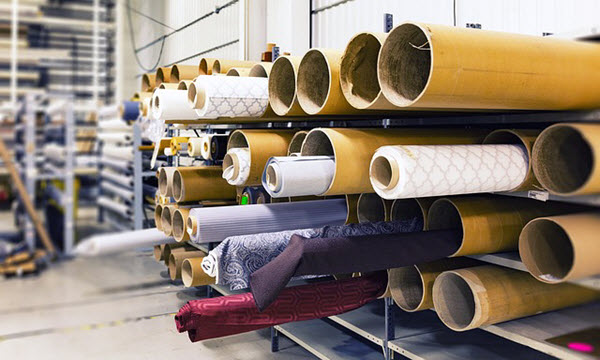Take a moment to think about your closet and everything inside. Chances are a big portion has labels that read “Made in China” or “Made in Bangladesh”. Maybe a few pieces have a proud “Made in America’ tag, but we bet these pieces are a minority.
Although consumers still rely on imported textiles and clothing and appreciate the lower price tag, there is something to be said for the quality of the items made and manufactured within our home country. Domestic manufacturing has a significant impact on communities and the economy.
The State of “Made in America”

A broad look at the data shows the United States imports almost 6 times what it exports, a huge portion of which comes right from China. Textiles alone amounted to $120 billion in imports in 2016 while American exports add up to just $21 billion.
Our top imports of clothing and textiles come from:
- China- 38%
- Vietnam- 9%
- India- 7%
- Mexico- %
- Bangladesh- 5%
- Other- 37%
It’s not just clothing that we massively outsource to foreign countries; nearly every industry has manufactured goods overseas for pennies on the dollar, making profits off often lower quality goods. Even baseballs for professional league players, the great American pastime, come from Costa Rica.
Only Louisville Sluggers continue to remain American-made. In fact, you can even visit their factory facility for a real-time tour of the production process right in Louisville, Kentucky.
Manufacturing Is A Boon to the Economy In Many Ways
U.S. manufacturing drives more innovation in the U.S. than any other sector. Being responsible for more than three-fourths of all private sector research and development, American manufacturers are dedicated to quality.
Domestic manufacturing strengthens economies, both nationally and locally. In 2016, manufacturers, on their own, contributed $2.25 trillion to the U.S. economy. For every one dollar spent in manufacturing, $1.89 goes to the economy. Taken at face value, U.S. manufacturing would be the world’s 9th largest economy.
Manufacturing makes up more than 8% of the U.S. workforce, providing safe working conditions, dignified treatment, and livable wages to workers even without college degrees. At an average hourly wage of $26 per hour, manufacturing jobs bring opportunities to small-town America with over 12 million reliable and rewarding jobs.
What’s more:
- 80% of consumers prefer “Made in America” products
- 60% of Americans say they are willing to pay 10% more for American-made products
- 66% of American consumers associate “Made in America” with high quality
The Hidden Cost of Cheap Goods
It may be easy to write off the importance of “Made in America”. After all, imported goods are cheaper and always in high supply. However, cheap goods come at a hidden price.
Many foreign manufacturing countries use unsafe with unfair working policies and environmentally damaging practices. Some are even known to pay their workers virtual slave wages. When the United States massively imports billions of dollars worth of foreign goods and when consumers continue to purchase these items for themselves, we are all complicit in the dangerous treatment of impoverished workers all over the world.
“Made in America” means more than just items manufactured close to home. The standards and implications of carrying this tag mean rigorous regulations, environmental impacts standards, and quality assurance.
Of the 2016 product recalls under the Consumer Product Safety Commission jurisdiction, China was responsible for 179 recalls. U.S. manufacturing, on the other hand, was responsible for only 73. Oftentimes, U.S. manufacturing leaders learn about quality issues, packing flaws, and other potential problems before they impact an entire shipment of goods.
By 2050, shipping emissions are predicted to increase by 50% to 250%. But as American domestic manufacturing grew between 1992-2009, toxic air emissions dropped by half. Global shipping accounts for 2.5% of greenhouse gas emissions, responsible for emitting 1,000 million metric tons of CO2 every year.
At present, U.S. manufacturers are subject to stringent environmental regulations for:
- Clean Air and Clean Water Acts
- Toxic Substance Control Act
- Regular EPA Inspections and Evaluations
Conclusion
Advanced U.S. manufacturing strengthens communities and the economy like no other industry. Go ahead and take pride in the work of American manufacturing, the employees, engineers, and hard work that go into creating some of the world’s highest quality goods.
Take a look at this infographic for more information on the state of modern American manufacturing. Additionally, know how it stimulates economies on every level, influences change in workers’ rights and environmental standards, and why it’s giving the United States a competitive edge in world trade.
Please include attribution to standardtextile.com with this graphic.